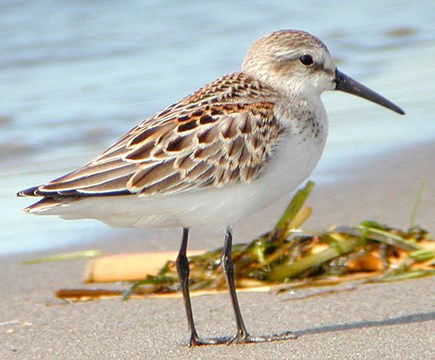The wonderful weather we have been having belies the fact that it is almost fall. The birds are not fooled, though, as they anticipate the coming change of the season, and the various migrational movements by the different families of birds are well underway.
Certainly, the shorebirds are the earliest southbound migrants. Many shorebird species, such as the sandpipers, yellowlegs and dowitchers, winter from the southern U.S. south into central America and breed in the Arctic. They migrate north in April and May, arriving in the Arctic as the snow and ice release their wintertime grip. After a brief period of courtship, incubation and raising the chicks to fledging, the adult birds are on their way back south. In a number of species, the adults depart before the young of the year, leaving the new generation to find their own way south, thousands of kilometres, to the wintering grounds. The first southbound shorebirds appear unfailingly on the Sunshine Coast in the last few days of June and continue through July and August and into September.
Starting in mid-August and building into Sep-tember, the first waterbirds begin to reappear. The mudflats at the head of Porpoise Bay are now hosting various species of ducks that have been absent for the last few months. Some of these, such as American wigeon, will spend the winter with us, and others, pintails for example, will largely gravitate to the Fraser Delta, which has the huge expanses of mudflats they prefer. On the open waters of the Strait, the grebe family is starting to reappear with horned, red-necked and western grebes being seen in areas such as Trail Bay and Mission Point.
The land areas of the Sunshine Coast have been exceptionally quiet in recent weeks, and not just because the birds have ceased to sing (as they do in this time period every year). Rather, the exceptional lack of moisture seems to have inhibited insect populations, which the insectivorous birds feed on, and this may have driven the birds to an early departure.
I was outside on my deck after midnight recently, and overhead in the darkness, I heard the distinctive migrational call note of an unseen bird, perhaps a Swainson’s thrush, heading south to central America. Also, on Aug. 22, I was watching a spectacular sunset unfolding over Texada Island when a pygmy owl betrayed its presence with its chattering call.
To report your sightings or questions, contact [email protected] or 604-885-5539.



